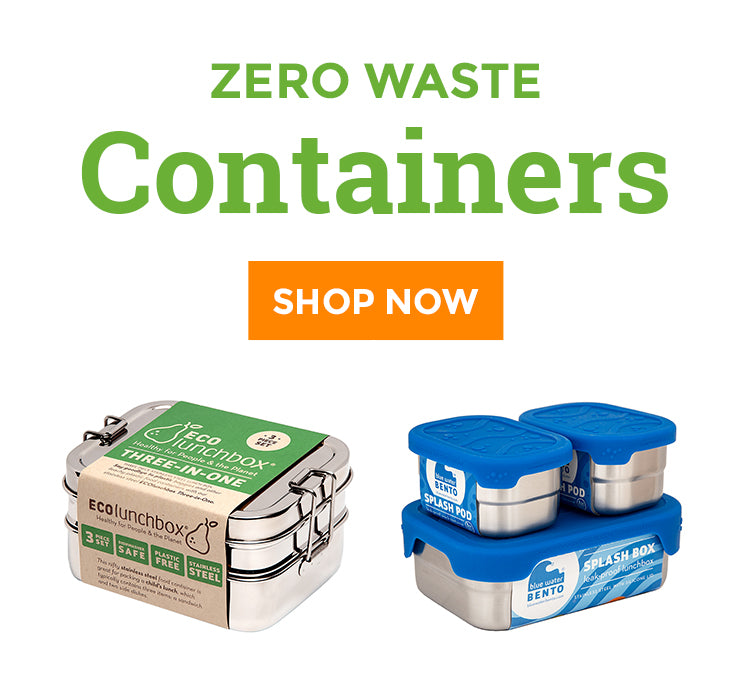The Plastic Recycling Myth

Want to Know What Happens When You Recycle Your Plastic?
For generations, we've heard that recycling plastic is the answer to the growing plastic pollution problem. We’ve been led to believe that if we simply put our plastic bottles and containers into the designated bin, they'll be transformed into new products and reused over and over again.
Sadly, this false promise of plastic recycling has misled us into thinking that recycling is a panacea. The fact is that only a tiny percentage of plastic destined for recycling gets recycled.
Read on to better understand the reasons behind why recycling isn’t working. By putting to rest this myth, we can recommit to reducing our dependence on plastics and supporting our leaders in putting into place policies that discourage the use of harmful plastic as well as support eco-friendly, plastic-free alternatives.
Is Plastic Really Being Recycled?
More Than a Physical Footprint
Is Plastic Really Being Recycled?
According to a report by the Environmental Protection Agency (EPA) in 2021, only 5% of plastic waste in the United States was recycled. Globally, the percentages vary but overall are less than 5%. That means most of our plastic waste ends up in landfills, incinerators, or the environment.That is a far cry from the circular plastic recycling system that supposedly exists. The truth behind the myth of plastic recycling as panacea is complex, but it boils down to two main issues: the low value of recycled plastic and the lack of infrastructure for plastic recycling.
Useless Plastic Junk
Let's consider the low value of recycled plastic. For plastic recycling to be economically viable, the value of recycled plastic must be greater than the cost of collecting, sorting, and processing it. Unfortunately, it is often not the case, as recycled plastic is often of lower quality than virgin plastic, making it less desirable to manufacturers.
Moreover, oil prices greatly influence the market for recycled plastic — when oil prices are low, the value of recycled plastic decreases. That results in many recycling facilities being unable to sell the plastic they collect for recycling, forcing them to discard it as waste into landfills and incinerators that cost less.
A more eco-friendly alternative is to make products from materials like stainless steel that have value and are recycled at rates of more than 90% because it’s more cost effective to recycle the steel than make the material new from scratch. Steel and other higher value materials then can be infinitely remade into new products instead of discarded, a system described as the circular economy.
Lack of Infrastructure
The lack of infrastructure for plastic recycling is another major barrier. In the United States, for example, only a few facilities are equipped to handle plastic recycling. Furthermore, they are often located in urban areas, leaving rural communities with few options for plastic recycling. Unfortunately, that means municipalities must transport their plastic waste long distances, increasing the recycling cost and making it less economically viable.
To make matters worse, plastic recycling is often contaminated by other materials, such as food waste or non-recyclable items. This common contamination of plastic collected curbside makes it even more difficult and expensive to recycle plastic. As a result, much of it ends up in landfills or incinerators along with the low-grade offal.
More Than a Physical Footprint
Sadly, the negative impact of plastic waste doesn't end there. Landfills and incinerators contribute abundantly to greenhouse gas emissions and, coupled with burning plastic, significantly increase global warming. A Center for International Environmental Law study found that plastic production and disposal contribute to at least 4% of global greenhouse gas emissions — the equivalent of the emissions produced by 189 coal-fired power plants!
Even individuals can take steps to be part of reducing the plastic pollution problem. For example, reducing dependence on single-use plastics and choosing reusable plastic-free lunchware can reduce global warming pressures as demonstrated in our ECOlunchbox Planet Impact study.
We Are What We Eat
Unfortunately, plastic that is not recycled often ends up as environmental pollution, which can have devastating impacts on wildlife and ecosystems. When plastic waste enters the ocean, it can break down into smaller pieces, known as microplastics, which marine animals can ingest.
Microplastics can cause physical injury and block the digestive tracts of animals, leading to malnutrition and death. Marine mammals, such as dolphins, whales, and seals, are particularly vulnerable to plastic pollution. They can mistake plastic debris for food and feed it to their young, leading to injury or death for both the adult animal and its offspring. Additionally, those microplastics can end up in the human food chain, eventually causing harm to our diets as well.
Plastic is also unhealthy for people, since it contains endocrine disrupting chemicals. Even so-called BPA-free plastic, which is marketed as food safe, is not recommended since they also generally contain unhealthy toxins.
Choking Our Planet
Furthermore, plastic pollution can also disrupt entire ecosystems by introducing harmful chemicals into the food chain. Estimates quote over 5 trillion pieces of plastic floating in the world's oceans, and we expect that number to increase in the coming years. Finally, research suggests that microplastics could be diminishing the growth rate of plankton, thus affecting our ocean's ability to produce its share of Earth's oxygen.
It is crucial we take action to say goodbye to plastic and protect our planet and the animals that call it home by reducing our use and disposal of plastic, including so-called biodegradable plastics that have even more problems than conventional plastics. Surely, our governments should also invest in better infrastructure for plastic recycling. Only through a combination of strategies can we hope to make a meaningful impact on this global crisis and address the devastating effects of plastic on the environment and human health.
Recycling Trash Photo by Vivianne Lemay





